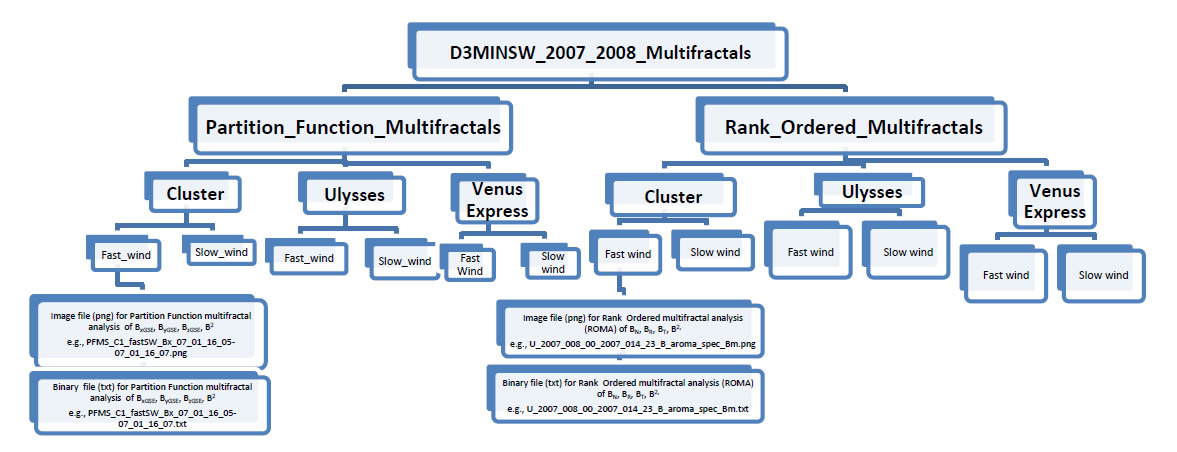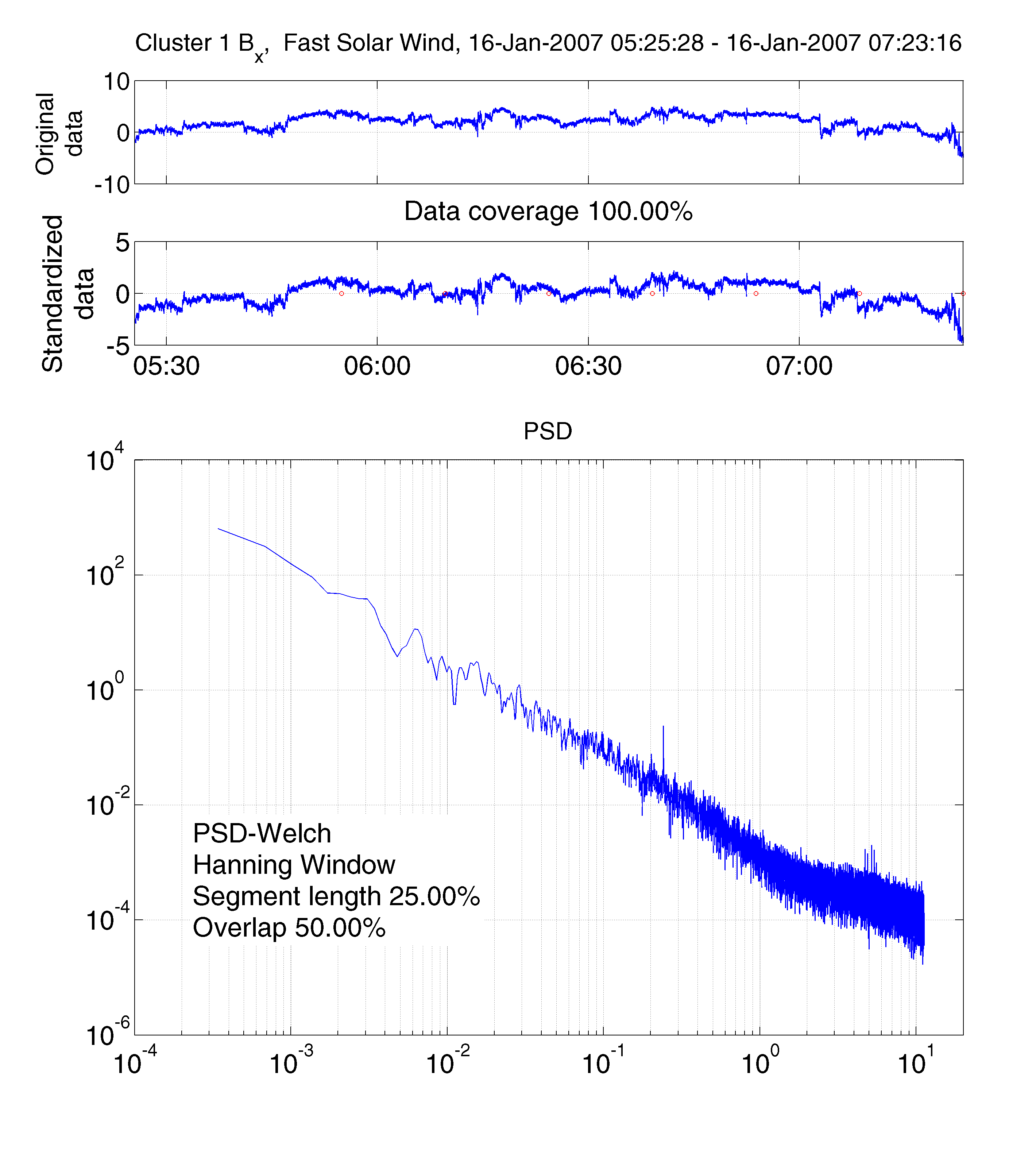This database provides results of solar wind data analysis from Ulysses (2007-2008), Cluster (2007-2008) and Venus Express (2007-2008); it includes three catalogues organized as a function of analysis method, as shown below:
- D3MINSW_2007_2008_PSD - A catalogue of spectral analysis of solar wind data from Ulysses, Cluster and Venus Express between 2007 and 2008; it includes 1765 PSD spectra (448 spectra for fast solar wind, 1317 spectra for slow wind).
- D3MINSW_2007_2008_PDF - A catalogue of Probability distribution functions computed for magnetic fluctuations recorded in the solar wind by Ulysses, Cluster and Venus Express between 2007 and 2008; it includes 2736 PDFs (1203 for fast solar wind, 1533 for slow wind).
- D3MINSW_2007_2008_Multifractals - A catalogue of multifractal spectra (computed with Partition Function and Rank Ordered methods) of magnetic fluctuations recorded in the solar wind by Ulysses, Cluster and Venus Express between 2007 and 2008. This catalogue includes an overall number of 3007 multifractal spectra of which 821 spectra are computed for fast solar wind (643 spectra are derived with partition function and 372 spectra are derived with rank ordered approach, respectively). Of the 2186 multifractal spectra computed for slow wind, 1618 are obtained with partition function and 716 with rank ordered approach.
The two archives D3MINSW_2007_2008_PSD and D3MINSW_2007_2008_PDF have a similar structure as ilustrated by the diagram inserted below. The results are organized as a function of mission and type of wind. The procedure to determine the state of the wind (fast or slow) is based on a complex of five criteria (Wawrzaszek et al., ApJL, 2015) aplied on Ulysses data. The selection is based on a single criterion in case of Cluster (fast wind is considered for bulk speeds larger than 450 km/s). The two archves include image files (.png) and the corresponding binary files (.txt) for PSDs and PDFs computed for solar wind data from Cluster 1, Cluster 3 and Ulysses. The name of the files are self explanatory and indicate the type of wind, the spacecraft and the date of observations, as illustrated by the example included in the diagram below.
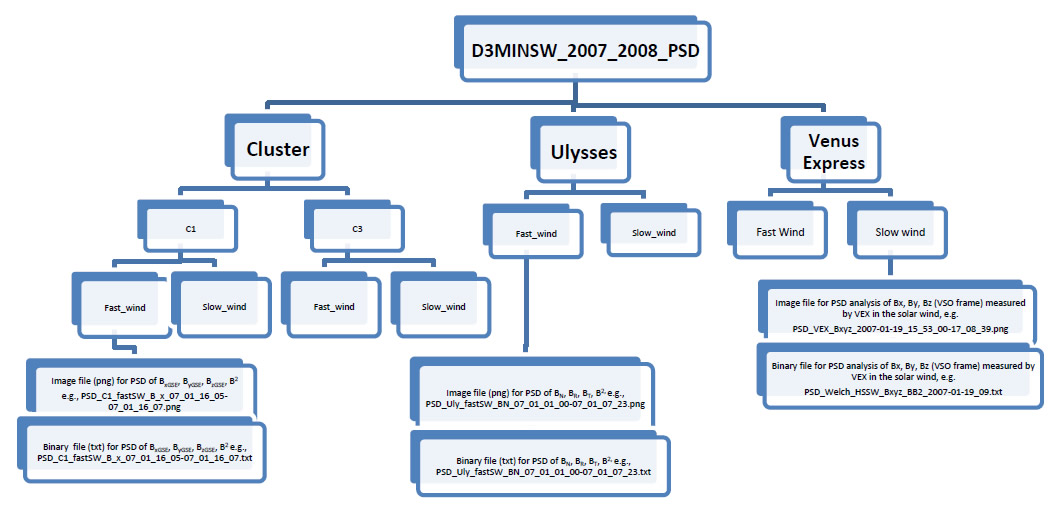 Diagram ilustrating the structure of the catalogue D3MINSW_2007_2008_PSD; the PSD results are organized as function of spacecraft and type of wind (slow vs.fast).
Diagram ilustrating the structure of the catalogue D3MINSW_2007_2008_PSD; the PSD results are organized as function of spacecraft and type of wind (slow vs.fast).
The graphical files for the PSD and PDF analysis of Ulysses data included in D3MINSW catalogues have the same format as the one illustrated for D1MAXSW. We show below two samples of PSD spectra from D3MINSW_2007_2008_PSD (top panels) and two samples of PDFs from D3MINSW_2007_2008_PDF (bottom panels) computed for Cluster (left column) and Venus Express (right column) data, respectively. The data correspond to a fast solar wind stream deteceted in the solar wind by the two missions.
|
|
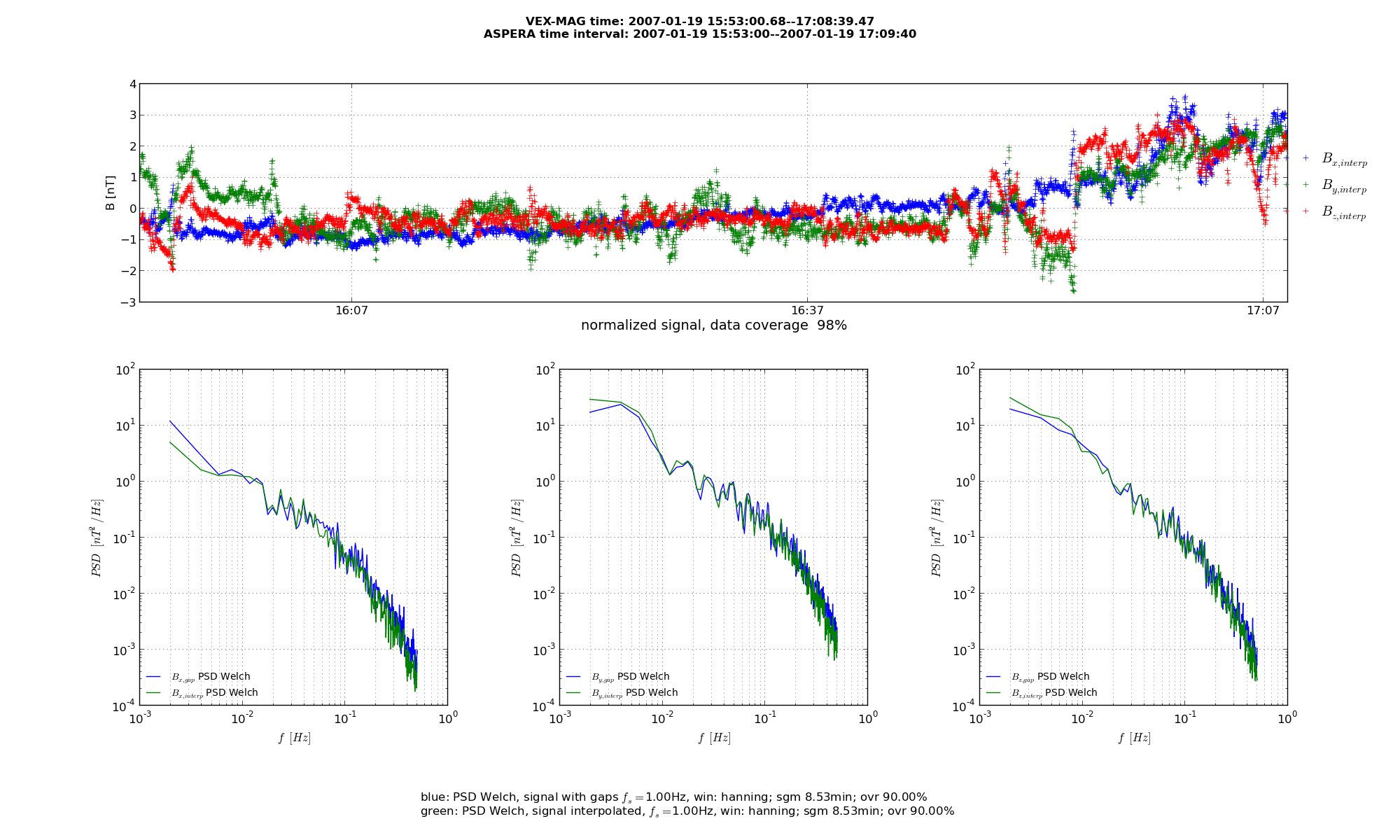 Sample of graphical file created for the PSD analysis of Venus Express data in the solar wind at solar minimum and included in D3MINSW catalogue. (upper panel) raw data showing the three components of the magnetic field; (lower panesl) PSD spectrum computed with the Welch alghorithm for Bx (left), By (center) and Bz (right). Sample of graphical file created for the PSD analysis of Venus Express data in the solar wind at solar minimum and included in D3MINSW catalogue. (upper panel) raw data showing the three components of the magnetic field; (lower panesl) PSD spectrum computed with the Welch alghorithm for Bx (left), By (center) and Bz (right). |
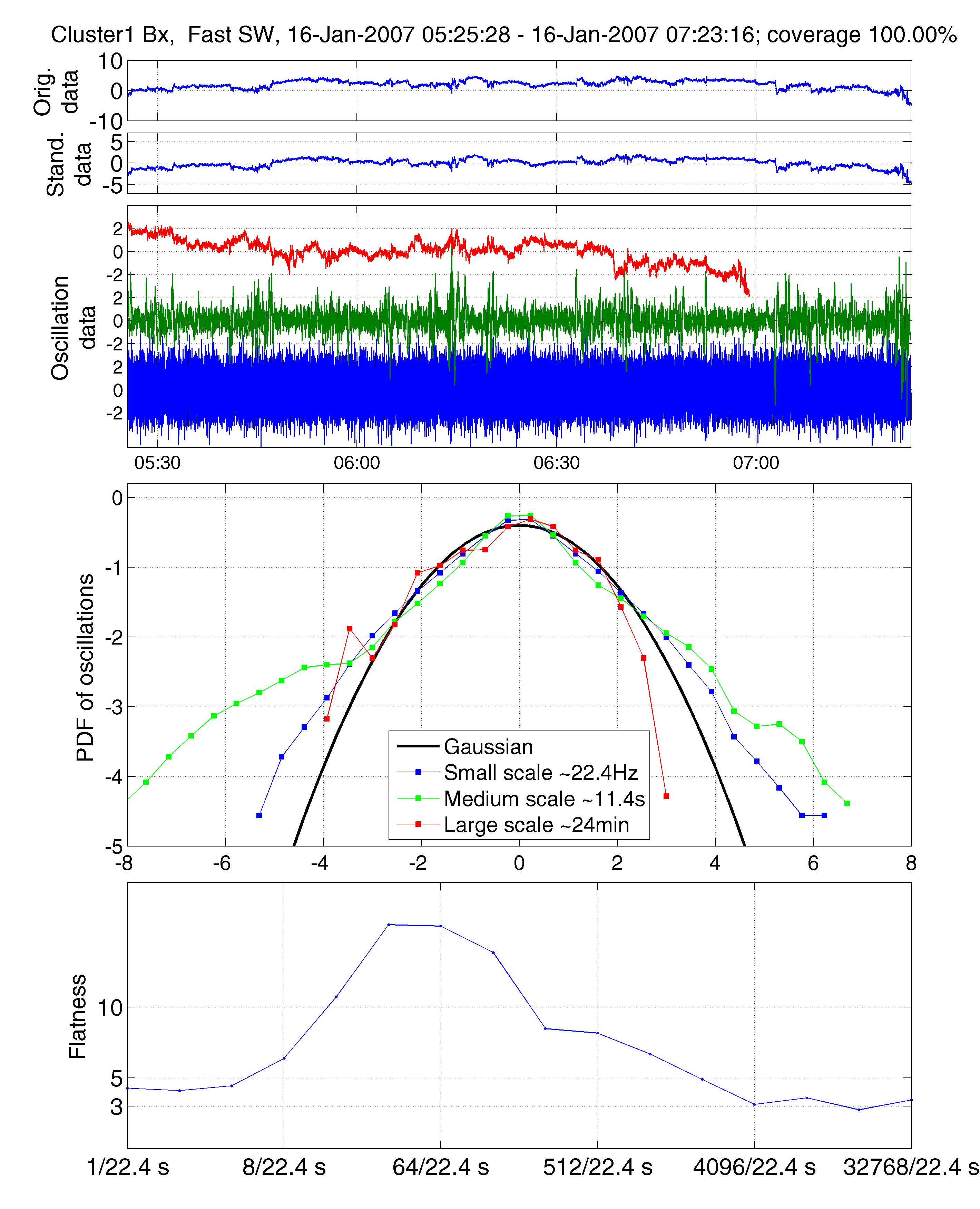 Sample of graphical file created for the PDF analysis of Cluster data in the solar wind at solar minimum included in the D3MINSW catalogue. (first panel) the raw data; (second panel) standardized data (the average is subtracted and the origin signal is divided by its variance; (third panel) the difference vectors at three different scales whose normalized histogram provides the estimation of the PDF at that respective scale; (fourth panel) the PDFs for the three selected scales (a reference Gaussian shape is shown in red); (fifth panel) the flatness/kurtosis as a function of scale. Sample of graphical file created for the PDF analysis of Cluster data in the solar wind at solar minimum included in the D3MINSW catalogue. (first panel) the raw data; (second panel) standardized data (the average is subtracted and the origin signal is divided by its variance; (third panel) the difference vectors at three different scales whose normalized histogram provides the estimation of the PDF at that respective scale; (fourth panel) the PDFs for the three selected scales (a reference Gaussian shape is shown in red); (fifth panel) the flatness/kurtosis as a function of scale. |
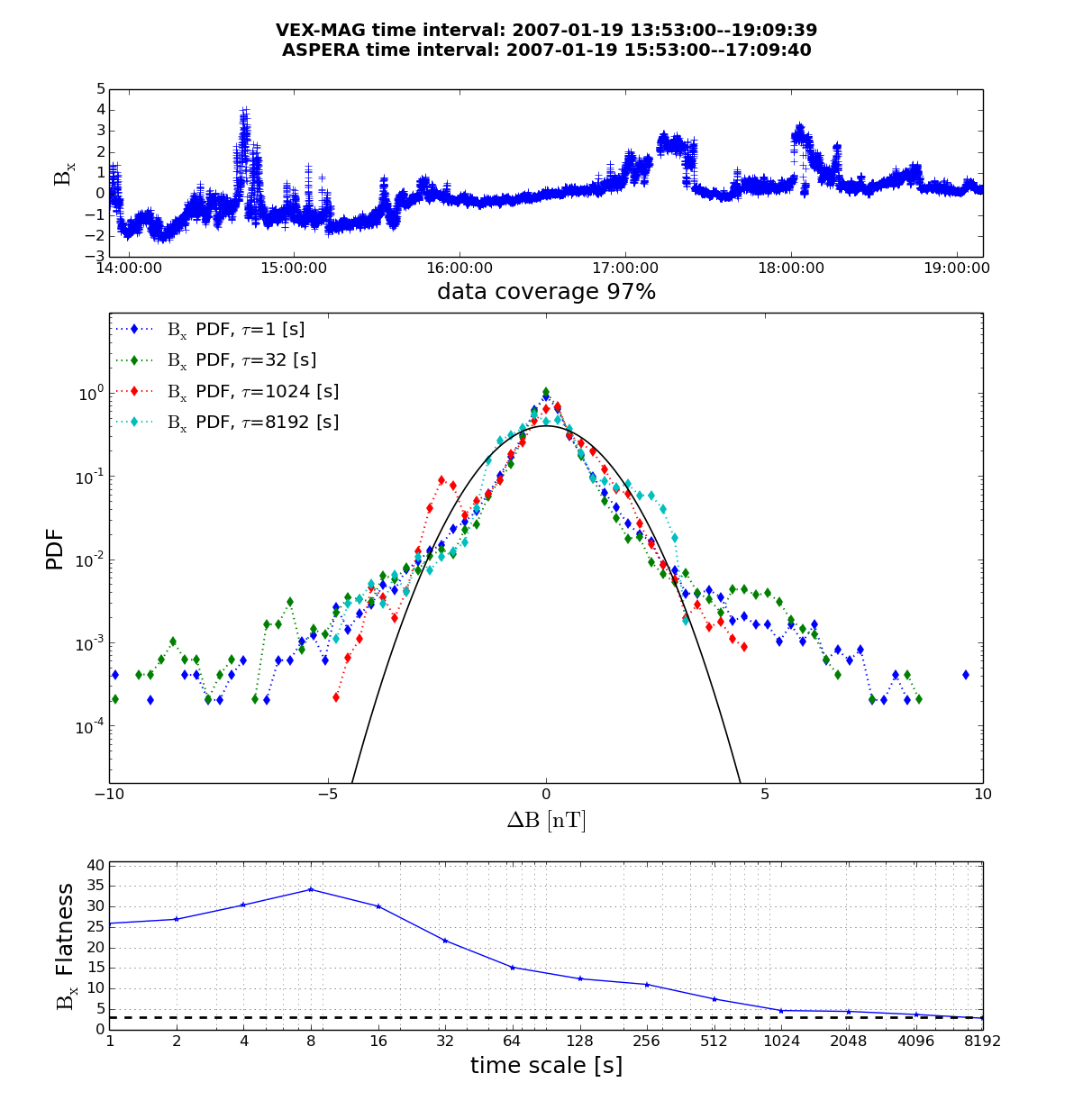 Sample of graphical file created for the PDF analysis of Venus Express data in the solar wind at solar minimum included in the D3MINSW catalogue. (first panel) the raw data; (second panel) the PDFs for the three selected scales (a reference Gaussian shape is shown in black); (third panel) the flatness/kurtosis as a function of scale Sample of graphical file created for the PDF analysis of Venus Express data in the solar wind at solar minimum included in the D3MINSW catalogue. (first panel) the raw data; (second panel) the PDFs for the three selected scales (a reference Gaussian shape is shown in black); (third panel) the flatness/kurtosis as a function of scale |
The structure of the archive D3MINSW_2007_2008_Multifractals is illustrated by the diagram included below. We provide two types of multifractal spectra:(1) the partition function multifractal spectra (for a description see, e.g., Wawrzaszek et al., ApJL, 2015) and the Rank Ordered Multifractal Analysis (ROMA, for a description see; e.g. Chang et al., 2011). The results are grouped as a function of spacecraft and type of wind (fast versus slow).
